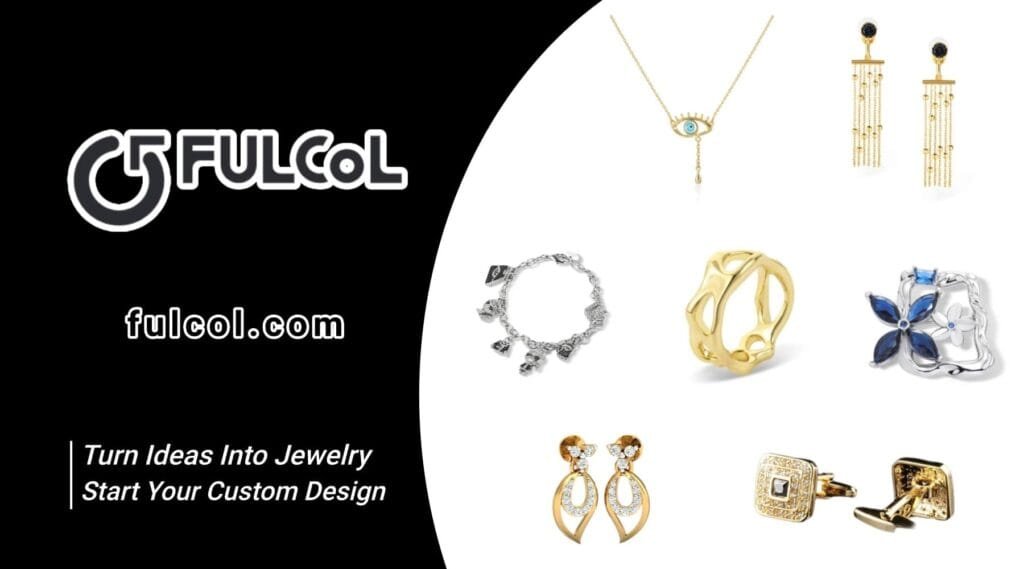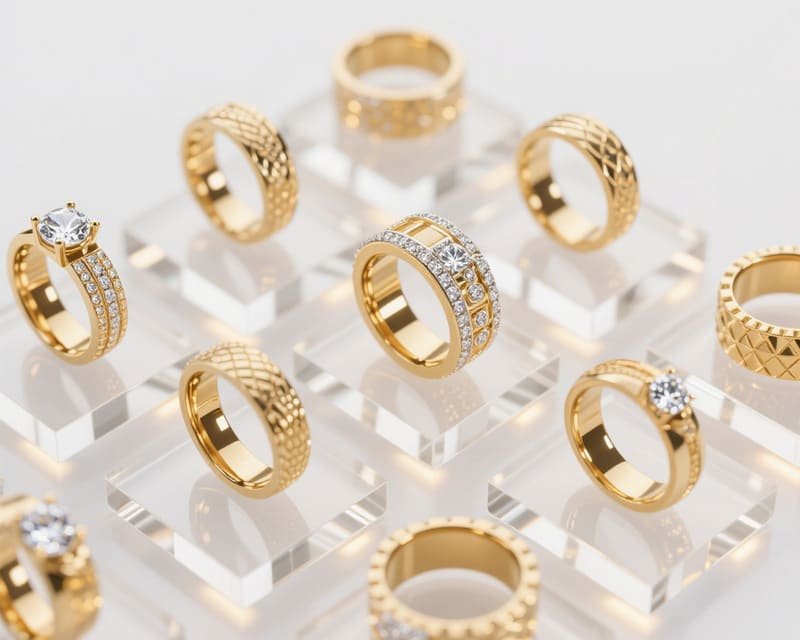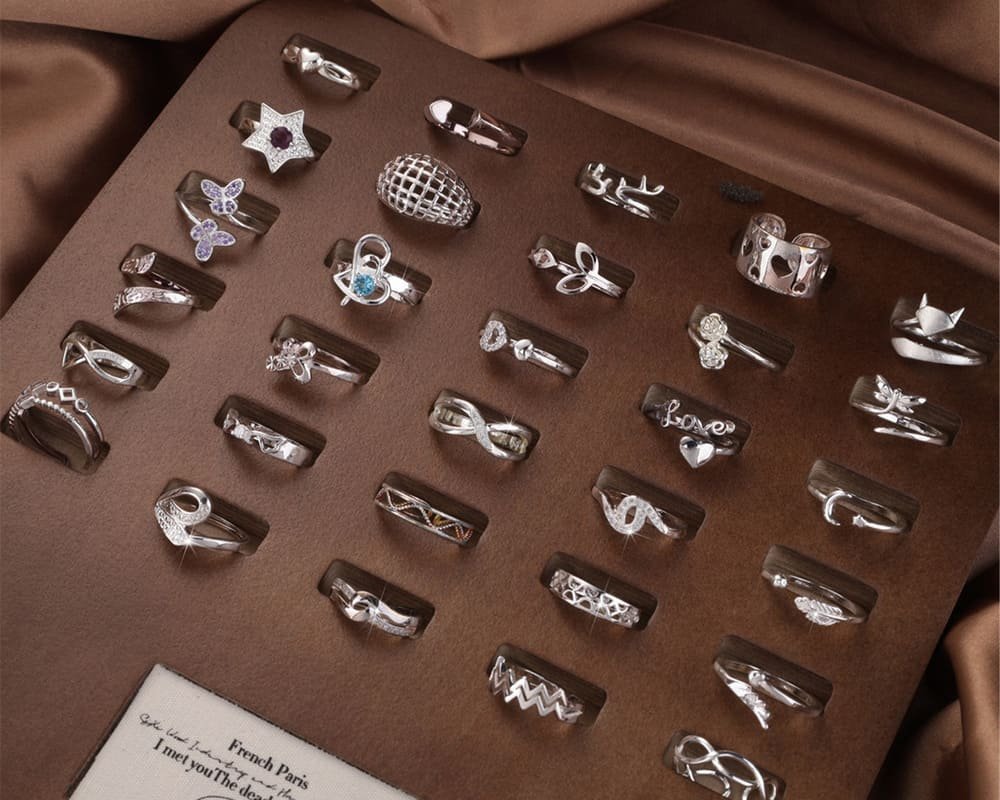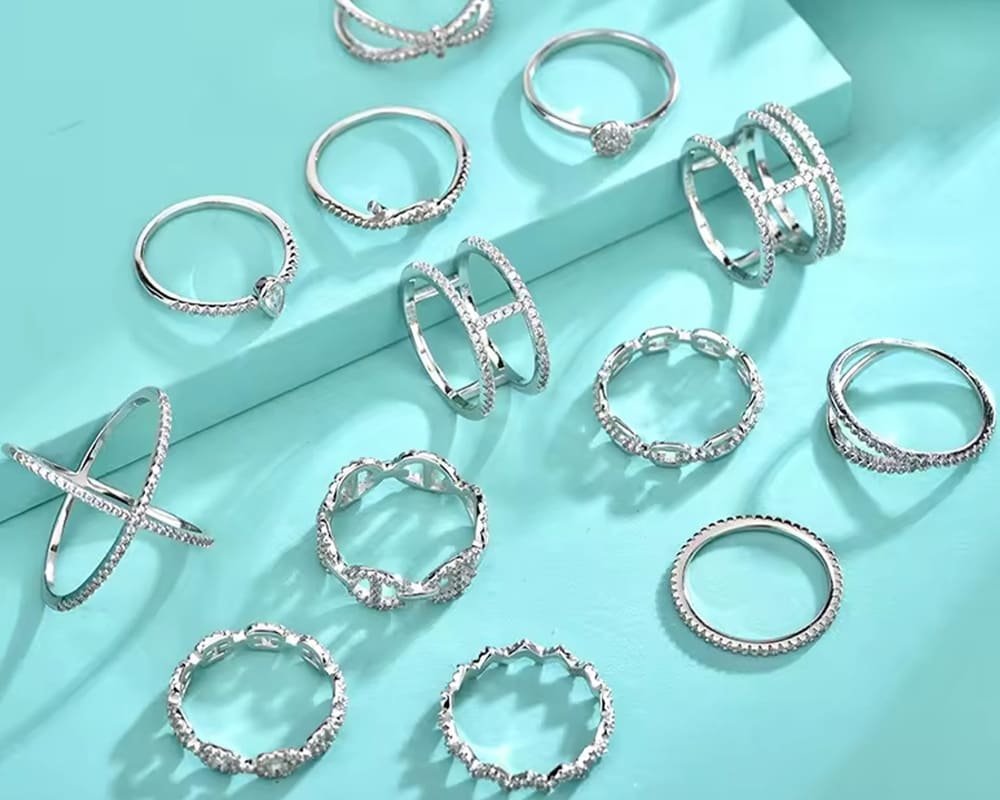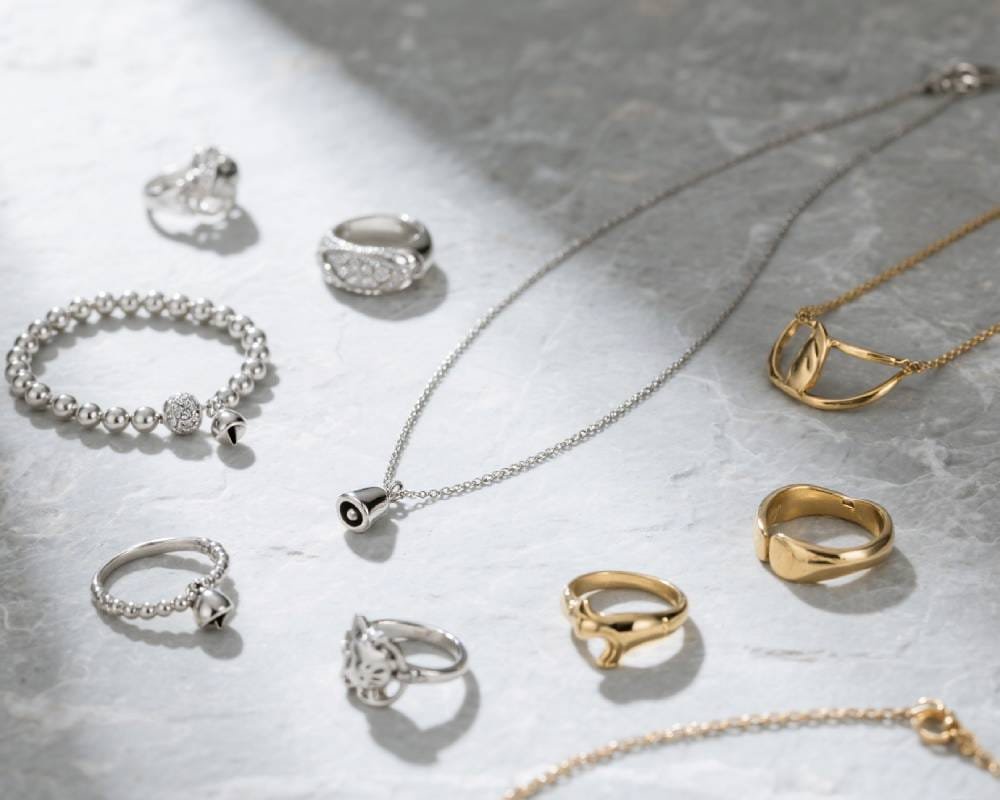Jewelry is not only the finishing touch to decorate life, but also the carrier of beautiful memories such as love, friendship, and career achievements. Imagine that when you wear the couple rings that represent mutual support, or the ingenious K gold necklace, your confidence and charm will be instantly doubled. However, if the jewelry loses its luster due to long-term wearing, dark spots appear on the metal surface, or there are safety hazards due to loose gemstones, even the most expensive jewelry cannot bring you the ideal joy.
According to the latest statistics from the International Jewelry Association (CIBJO), about 40% of jewelry will oxidize, scratch or loosen within two years due to lack of daily maintenance, affecting its appearance and service life. Proper cleaning and maintenance can not only restore the jewelry to its original appearance, but also extend its service life and avoid secondary damage caused by neglect. Especially for personalized jewelry manufacturers like Fulcol who are good at K gold, silver and brass, they know that proper cleaning and maintenance can not only restore the jewelry to its original appearance, but also extend its service life, saving you more maintenance costs.
Table of contents
- Basic knowledge of jewelry materials: the characteristics of K gold, silver and brass
- Correct methods and tools for daily cleaning
- Deep maintenance: professional cleaning and maintenance process
- Storage and wearing suggestions: Tips to extend the life of jewelry
- Avoid common mistakes: Misunderstandings and solutions in maintenance
- Special case handling: Maintenance points for gemstone inlays and complex designs
Basic knowledge of jewelry materials: the characteristics of K gold, silver and brass
K gold (taking 18K gold as an example)
18K gold contains 75% gold, and the remaining 25% is alloy elements such as silver, copper, nickel or palladium. Different proportions give the metal different colors and hardness. The typical 18K gold formula is 75% pure gold, 12.5% copper, and 12.5% silver, which balances plasticity and wear resistance. Imagine that pure gold is as soft as honey, and the alloy is like adding beeswax to honey, so that it can maintain a smooth texture and is not easy to deform at will.
K gold is harder than pure gold, but it may still lose its luster due to friction or chemical erosion during daily wear. Compared with 24K gold, 18K gold is about 30% harder, and it can more safely resist minor collisions during daily wear.
925 silver
Standard 925 silver is composed of 92.5% pure silver and 7.5% copper and other metals to improve hardness and toughness. The minimum silver content is not less than 925‰.
Because copper easily reacts with sulfides in the air, 925 silver is prone to dark gray or black silver sulfide “tarnish” and needs to be cleaned in time.
Brass
Brass is an alloy of copper and zinc. The copper content is generally 60-80%. The hardness and ductility can be adjusted according to the ratio. The density is about 8.4-8.7 g/cm³. Different ratios can achieve a gradient from bright gold to dark red copper.
When exposed to a humid or sulfur-containing environment, brass will produce a brown or black surface corrosion layer due to the chemical reaction between copper and sulfur, oxygen and moisture in the air. In severe cases, green copper salts may even be formed.
Correct methods and tools for daily cleaning
Imagine that you have just returned home, your hands are still stained with fine dust and cosmetics from daily life, and you are wearing your beloved jewelry. If you are not careful, time will leave marks in the light and shadow. Spending three to five minutes a day and cleaning according to the following steps can significantly reduce the difficulty of subsequent maintenance.
List of necessary tools
Clean warm water basin: The temperature should be controlled at 30–40°C. Do not use hot water to avoid damaging some gemstones.
Unscented neutral detergent: Choose baby hand soap or dishwashing liquid with a pH value of about 7, and avoid bleach or enzymes.
Soft-bristled toothbrush/jewelry brush: The bristles are about 1 cm long and can penetrate into small gaps without breaking easily.
Microfiber cloth: It can absorb tiny water droplets and is used for final drying and polishing.
925 silver polishing cloth: one side contains polishing agent, the other side is for mirror polishing, specially designed for silver jewelry.
Daily cleaning 6 steps
- Preparation and pre-rinsing: Take a small bowl of warm water, drop 3 drops of neutral detergent, and stir evenly. Those who wear jewelry can wash their hands first to avoid secondary contamination.
- Soaking and softening (5-10 minutes): Put rings, earrings, etc. into water, and use the water temperature and detergent to soften oil and dust.
- Brushing details: Take out the jewelry, and use a soft brush to gently brush the chain links, gaps and inlays in the same basin of water or under running water. The circular gesture is easier to clean dead corners.
- Secondary rinse: Take the jewelry under running water and rinse thoroughly. Remember not to shake it hard to prevent the gems from falling off.
- Dry water: Dip the residual water droplets with a microfiber cloth, gently press and dry, and avoid rubbing back and forth.
- Mirror polishing: For K gold and brass parts, use a microfiber cloth on the clean side to draw small circles for polishing. For 925 silver, use a polishing cloth to wipe both sides, one side to remove dirt and the other side to polish.
Frequency recommendation
Daily wear (such as rings, earrings): It is recommended to use the standard process once a week to maintain daily brightness.
Regular wear (necklaces, bracelets): About once every 2-3 weeks, especially when sweating more, the interval should be shortened.
Special gemstone inlays (diamonds, corundum): Perform daily cleaning once a month to ensure the firmness and glossiness of the inlay.

Deep maintenance: professional cleaning and maintenance process
For important or valuable jewelry, regular professional maintenance is essential:
Ultrasonic cleaning
Ultrasonic cleaning machines can use high-frequency vibrations to penetrate the cleaning fluid into the gaps of jewelry, which has a significant effect on stubborn dirt. However, it is not recommended to use it directly on jewelry containing fragile gemstones such as pearls, emeralds, and opals.
For severely oxidized brass parts, experts recommend using ultrasonic cleaning fluid containing citric acid and adding a small amount of lemon essential oil to enhance the cleaning power.
Steam cleaning
Steam guns are commonly used in professional jewelry stores. High-temperature and high-pressure steam can quickly remove surface oil and dirt without damaging gemstones. Suitable for 18K gold, jewelry inlaid with diamonds or corundum.
Inspection and tightening
Professionals will check whether the inlay and circlip are loose, and if necessary, re-weld or reinforce to prevent the gemstone from falling off. It is recommended to perform a comprehensive inspection every 6-12 months.
Plating maintenance
For white K gold, since daily wear will wear away the rhodium layer, it is recommended to perform heavy rhodium treatment every 1-2 years to restore the metal’s original color and corrosion resistance.
Deep polishing
Use polishing pastes and polishing wheels of different coarseness and fineness to grade and remove surface scratches, and finally use a mirror polishing wheel to restore the high gloss.
Storage and wearing suggestions: Tips to extend the life of jewelry
Reasonable storage and wearing habits can significantly slow down the aging and oxidation of jewelry:
Storage in partitions
Use storage boxes or independent pouches with flannel lining and compartmental design to store jewelry of different materials, colors, and gemstones separately to avoid scratches caused by mutual friction. Silver and brass jewelry can be placed in small zipper bags with moisture-proof agents to inhibit oxidation.
Moisture-proof and anti-oxidation
Place moisture-proof silica gel bags or anti-oxidation silver blocks in the storage area of silver jewelry to effectively absorb moisture and delay the sulfidation reaction.
Avoid chemical erosion
Alcohol, fragrances, and acidic ingredients contained in cosmetics, perfumes, and lotions can corrode metal surfaces. Jewelry should be kept away from direct contact before wearing. Apply skin care products and perfumes first and wait for 1 minute to dry before wearing jewelry.
When exercising, swimming, bathing, or doing housework, waterproof silicone rings should be worn instead of or jewelry should be removed to avoid contact with sweat, pool disinfectants, or detergents that may cause fading. Pool chlorine, detergent, and bleach can accelerate metal corrosion.
Temperature and light
Long-term exposure to high temperatures or strong ultraviolet rays can cause some organic inlays (such as amber and pearls) to fade or crack. Choose a cool and ventilated place for storage. Replace the desiccant regularly. The silica gel drying bag is valid for about 3 months and needs to be replaced or dried regularly before use.
Avoid violent collisions and frictions
Remove jewelry before exercise: Whether it is weightlifting or sprinting, intense physical activities may cause rings to hit hard objects and earrings to scratch the skin, causing deformation or scratches.
Be careful when wearing layers: Although wearing multiple necklaces together looks good, if the chains are knotted and rubbed against each other, they are not only easy to break, but also leave scratches on the pendant or K gold surface.
Regular inspection and rotation of wear
Regular “physical examination”: Check the inlay firmness and chain connection points of the jewelry every 3-6 months, and repair them in time if they are loose or broken.
Reasonable rotation of use: Avoid wearing the same piece of jewelry every day, and let them “rest” for a while, which can not only reduce wear and tear, but also extend the overall service life.
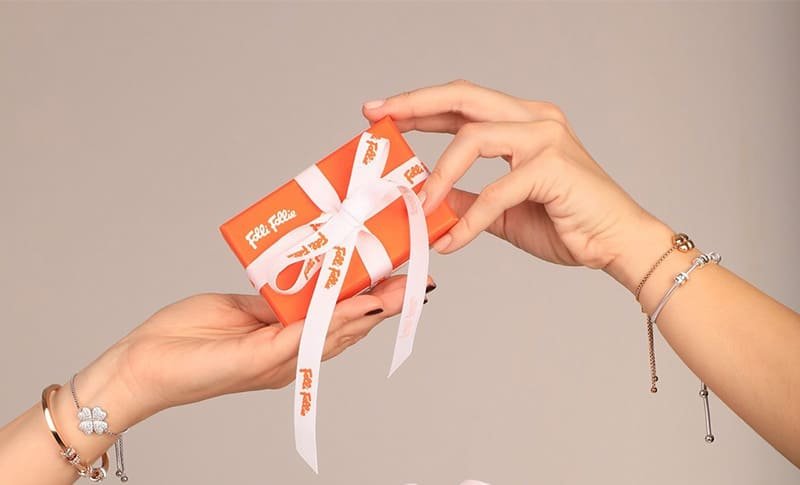
Avoid common mistakes: Misunderstandings and solutions in maintenance
| Common misunderstandings | Causes and hazards | Correct practices |
| Brush silver jewelry with toothpaste/baking soda | Toothpaste particles are rough and can easily scratch the silver surface; baking soda is highly alkaline and corrodes alloys | Use neutral detergent to soak + soft brush to clean |
| Use ultrasonic for all jewelry | Not distinguishing the hardness of gemstones, brittle stones are easy to loosen or even break | Classify by hardness, and clean fragile pieces manually |
| Over-frequent daily polishing | Improper friction causes the plating and alloy layers to gradually become thinner | Light polishing: once every 1-2 weeks Deep polishing: once a year |
| Mixed raw and cooked jewelry | Soft metals (K gold) and hard gemstones (diamonds) rub against each other, causing scratches | Classified and partitioned storage, separate small bags or compartments for different materials |
| Ignore maintenance records | It is difficult to track the status of jewelry and miss the best maintenance cycle | It is recommended to establish a paper or electronic maintenance log to record each maintenance and problems |
Special case handling: Maintenance points for gemstone inlays and complex designs
Pearls and organic gemstones
The surface of pearls is a natural protein layer, which is easily affected by chemicals and humidity. When cleaning, just wipe gently with a slightly damp soft cloth to avoid soaking; store separately from other hard jewelry.
Multi-gemstone pieces
Various gemstones have different tolerances to cleaning methods, and the method should be selected for the most fragile gemstone. For example, emeralds are easily damaged by ultrasound, so the whole jewelry needs to be brushed with warm water and soft brush.
Fine inlay
The paving process makes tiny diamonds or beads densely inlaid, and dust easily accumulates in the gaps. It is recommended to use a jewelry steam gun for deep cleaning, or send it to a professional institution for ultrasonic cleaning regularly.
Multi-metal assembly
Different metals have different tolerances to cleaning agents. For example, platinum and brass assemblies should avoid using solutions that are highly corrosive to copper; they can be cleaned with mild neutral soap and a soft brush, and then wiped dry with a neutral cloth.
| Start Your Custom Order | Email: info@fulcol.com | Number: +86 13055603907 |
Fulcol jewelry making wholesale suppliers start with the structure and chemical properties of common jewelry materials such as K gold, 925 silver and brass, and systematically sort out the key points of daily cleaning, deep maintenance, storage and wearing, misunderstanding avoidance, and care of special inlays. Most importantly, each step takes into account “simple”, “safe” and “operable”, allowing you to easily complete most maintenance work at home, while also clarifying when to hand it over to a professional organization.
In daily maintenance, you only need to use warm water, mild neutral detergent and soft brush according to the characteristics of the material, spend 5-10 minutes a week to quickly clean K gold, silver and brass jewelry, and then gently wipe and polish with a microfiber cloth to effectively remove sweat stains, dust and cosmetic residues to keep them bright.
For heavily oxidized or finely detailed inlays, it is recommended to hand them over to a professional organization for ultrasonic or steam cleaning every 6-12 months, and repair the coating in time to prevent wear and loosening. When storing, separate different materials into partitions, use moisture-proof bags or anti-oxidation silver blocks to avoid direct contact with cosmetics, sweat and swimming pool disinfectants, which can significantly slow down the oxidation rate.
